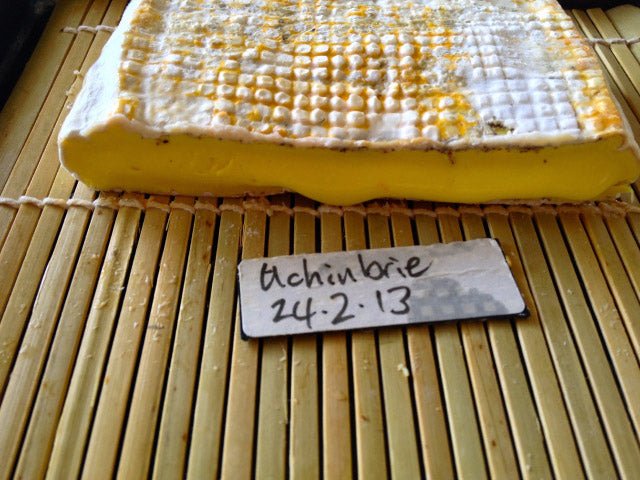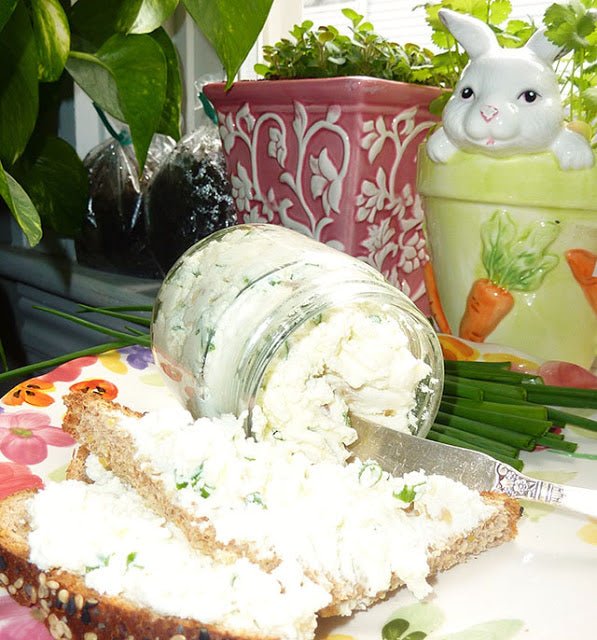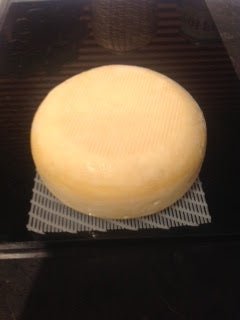John Davis is one of those amazing people who makes everything look easy- learning languages, playing musical instruments, making unique cheeses and teaching school. I asked him tell us a little bit about his life and how he came to live in Japan:
 |
| Playing Portuguese guitar |
I was born in England and came to Japan in 1976. I lived in Tokyo for 15 years, moved to Hokkaido for 15 years and came to Okinawa about 7 years ago. I’ve been a teacher of one kind or another all my life. Since coming to Japan, this has meant teaching English. I opened my own school in Tokyo in the early 80’s and another in Sapporo (where the beer comes from) in the early 90’s.
I love music – to listen to, to play and to compose. And I also love to eat. Japan is a paradise for food. There is some absolutely wonderful food here. As I’m sure you know, Japanese food not only tastes good, but looks exquisite.
Surrounded by the sea, there is a lot of sea food. Japanese is the only cuisine, in my humble opinion that understands fish. I say this with just ONE proviso. Raw fish I love,but I do not like to eat an animal – even a fish – that’s still alive. Some friends of mine invited me to a restaurant to eat “ikizukuri.”
Don’t read the next bit if you’re squeamish, but they carefully slice the fish’s body and serve it gasping for water (it’s a fish, remember) and rolling its eyes. There was some kind of communication between that poor guy and me that I didn’t enjoy.
It was, however, completely fresh and once I managed to put the thought out of my mind, quite delicious.
Being basically a poor country, the Japanese couldn’t afford to waste food. And so they ate more or less whatever they could get their teeth around-moving or still. Americans tend to eat the muscle of animals, but in Japan they eat everything. And I mean EVERYTHING. (There’s a story here, but you really don’t want me to tell it!)
The food varies greatly in different parts of the country and there is plenty to hold one’s interest. There isn’t, however, any cheese. All they had when I first came here was some ghastly dairy-like chemical preparation that a lover of Kraft would reject as boring.
I tried to make an omelette with it once. Here’s a good tip. The cheese in a cheese omelette goes on the OUTSIDE of the omelette, not the inside! I heated some oil in a frying pan and placed slices of this horrible soap like substance in the oil, expecting to melt it, caramelize it a little and pour the eggs onto it.
Did it melt? No. It’s probably made of the same stuff as the tiles on the outside of the space shuttle. It would certainly survive reentry. It just sat there, in the frying pan, laughing at me.
 |
| Coulommiers infused with Porcini (John said this was absolutely to die for!) |
So, after having been here 30 + years, coming back with a suitcase full of cheese every time I went abroad and desperately trying to befriend members of the US military and persuade them to sign me in on base so that I could purchase some cheesy comestibles, I gave up and decided that, if the mountain wasn’t going to come to Mohamed, Mohamed would have to go to the mountain and realized that if I wanted cheese, I would have to make it.
And round about then is when I found your site. And I’m eternally grateful.
There is a whole WORLD of cheese. Before, I had merely visited the tourist spots. But now, thanks to you I’m exploring it.
John feels certain he can help other home cheese makers in Japan, now that he has acquired some experience making his own cheese.
He spent a lot of time trying to buy starter cultures and rennet in Okinawa (we ship to Japan, but, needless to say, it’s not inexpensive). He finally succeeded in finding a company that would sell to him.
Now, he’s going to share his knowledge with other home cheese makers through a website he will be posting. It will be in English and Japanese, with recipes, advice about which milks to use, tips and funny stories etc. (We will post the link here when he sends it to us.)
He told us it is taking awhile to tweak the recipes for the milk in Japan, which is different from the milk here. (Climate has a big effect on milk.)
He gave us this description of one of his own original cheeses:
“UCHINBRIE”
By John Davis
I live in Okinawa, a very beautiful, subtropical island close to Taiwan. It would be a paradise if it wasn’t overrun with US troops. Officially part of Japan, Okinawa is about as Japanese as Ireland is English. It has its own distinct culture and that includes food.
It is a hobby of mine to try to include Okinawan ingredients in food that I prepare. One of these is turmeric. Known in the Okinawan dialect as “uchin,” turmeric is a relative of the ginger plant but has a distinctly orange or yellow colour.
You may know it as a spice often used in curries, but in Okinawa they steep it in water to make a tea, “uchincha.” This is a popular mixer for Awamori – a kind of rice brandy.
Turmeric is garnering a lot of interest in the medical field. Natalie Kling, a Los Angeles-based nutritionist, writes about the benefits of turmeric, “As an anti-inflammatory, antioxidant and antiseptic, it’s a very powerful plant. Adding this powerful plant to your diet is one of the best things you can do for long term health.”
I was curious to see what it would taste like in a cheese, and so, I added turmeric tea bags to the milk and allowed it to brew for an hour or so at room temperature. I then followed the basic Brie recipe, adding cultures, calcium chloride and rennet.
The next morning, I took it out of the form where it had been resting overnight, and christened it “Uchinbrie.”
A few days later, this is what it looked like:
Notice the bright yellow of the turmeric under the penicillium coat. I noticed, by the way, that I seemed to get a better yield when I added turmeric. Later, I realized why. Turmeric is a member of the ginger family and ginger is one of those plants that will set milk, like rennet.
Anyhow, weeks later, we tried it and pronounced it good.
I was thinking of what else to add to it to spice it up when I noticed a bottle of “hibaachi” on a shelf in the kitchen. “Hibaachi” or, “bibachi” is another Okinawan spice, similar to what the Romans 2,000 years ago knew as “piper longum” (long pepper).
Here it is dried:
So I made another batch of uchinbrie and when it had rested overnight, I took it out of the cloth and dusted it with powdered long pepper.
This is what it looked like a few weeks later. You can just see the layer of long pepper under the surface:






















































































































































